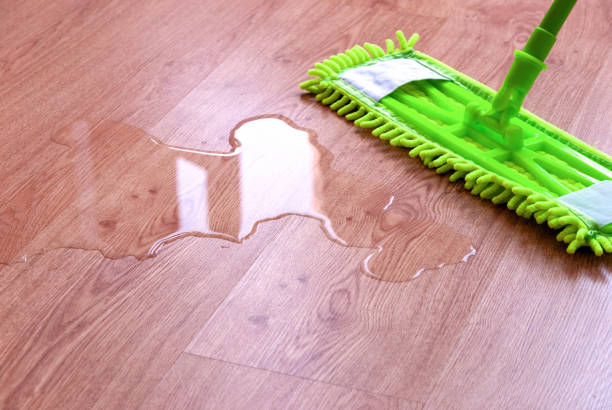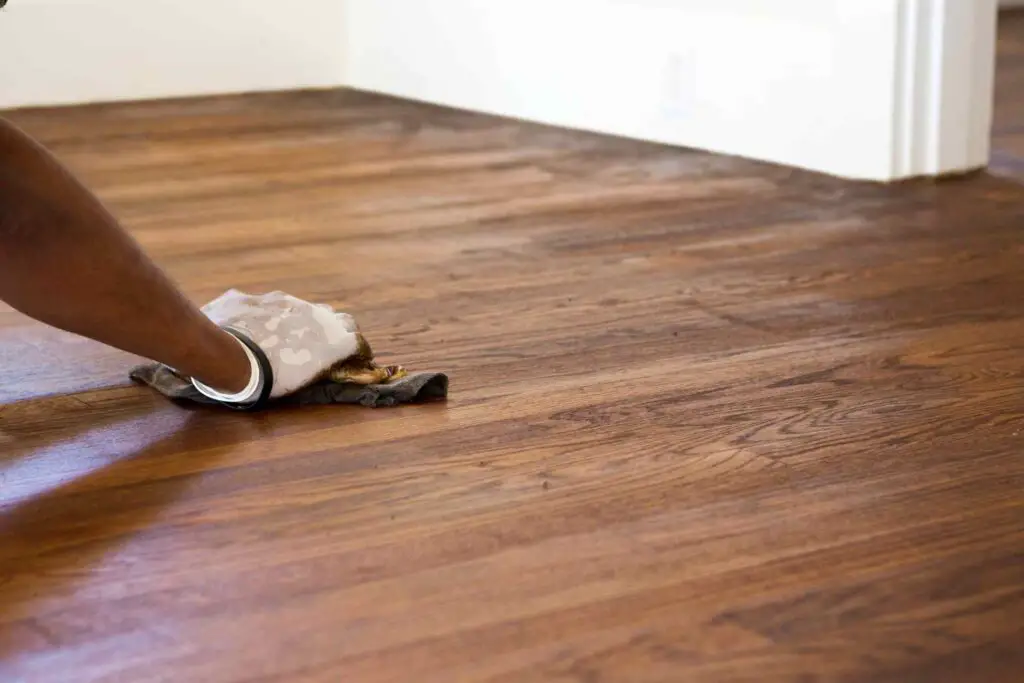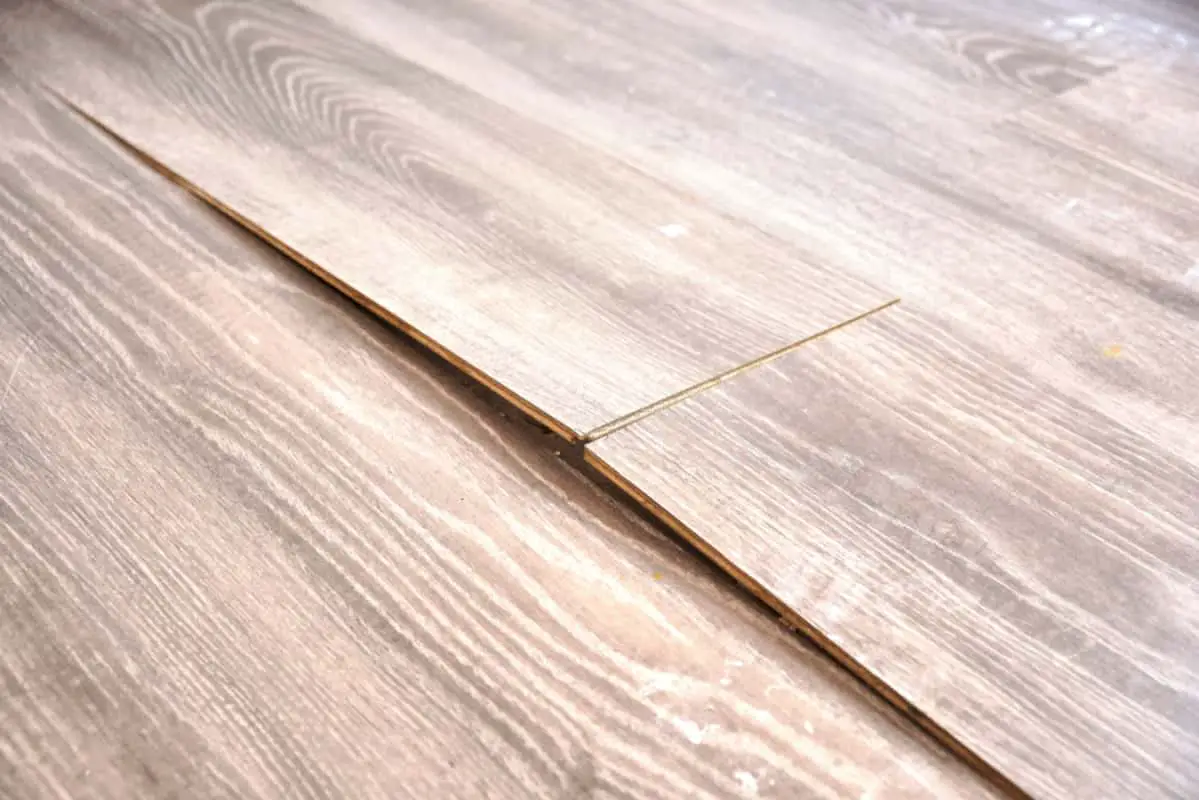When it comes to maintaining the aesthetic charm and durability of your home, taking care of your laminate flooring is crucial. However, if you encounter a common issue like swollen laminate flooring, you might wonder if you need to replace the whole floor.
Fear not, because in this guide, we will step-by-step walk through the process of how to repair swollen laminate flooring without replacing it. This cost-effective, DIY-friendly approach will help you restore your floor’s original beauty, ensuring its longevity and saving you from hefty replacement costs.
Assess the Damage
The first step towards repairing your swollen laminate flooring is to identify the extent of the swelling. Examine your flooring carefully, paying special attention to the areas around sinks, dishwashers, and bathrooms where water is frequently used.
Look for signs of discoloration, warping, or a change in texture; these are telltale signs of water damage. By determining how widespread and severe the damage is, you can plan your repair strategy effectively.
If the damage is localized to a few boards, you may be able to repair these areas specifically without needing to address the entire floor.
Determine if the Damage is Localized or Widespread
Once you’ve assessed the damage, the next step is to decide whether the swelling is localized or widespread.
Localized damage typically affects only a few laminate boards, usually in areas near water sources like kitchens and bathrooms.
Widespread damage, on the other hand, can impact large sections of your floor or even the entire area. This type of damage usually happens due to a significant water leak or flooding.
If you find that only a few boards have been affected, you’re dealing with localized damage. In this case, you can focus your repair efforts on those specific boards.
However, if you notice that the swelling is present across a significant portion of your floor, you’re likely dealing with widespread damage. In such an event, you might have to consider more comprehensive repair solutions.
Gather Necessary Tools
The appropriate tools are critical to effectively repair swollen laminate flooring. Here’s a list of what you’ll need:
Hairdryer: An ordinary hairdryer can be used to expedite the drying process of any damp spots on the laminate.
Iron: A standard clothes iron can be used to apply heat to the affected area, aiding in reshaping and resealing the damaged laminate boards.
Damp Cloth: This will be used to clean the surface and remove any dirt or dust before applying the sealant.
Sandpaper: A piece of sandpaper is necessary to smooth out rough edges or uneven surfaces caused by the swelling.
Sealant: A good quality sealant will be applied to the cleaned and sanded laminate surfaces to help prevent future water damage.
Dry the Area

Once you’ve gathered your tools, start the repair process of the swollen laminate flooring without replacing it by thoroughly drying the area. Utilize your hairdryer or a similar source of dry heat to focus on the swollen areas.
Be sure to move the hairdryer slowly and evenly over the damaged sections, allowing the heat to penetrate and evaporate any trapped moisture. This step is crucial, as any lingering moisture can cause further swelling and damage.
For larger affected areas, you might consider using a heat gun or a space heater. However, always be cautious about the safety risks associated with these tools, including fire hazards.
Remember, the goal is to restore your flooring to its original state, not to exacerbate the situation with additional problems. Continue this process until you are confident that all moisture has been removed. This is your first effective step on how to repair swollen laminate flooring without replacing it.
Sand the Swollen Area

Once the laminate flooring is thoroughly dry, the next step is to sand down the swollen area using fine-grit sandpaper. This is a delicate operation that requires care and precision.
Selecting the Correct Sandpaper: Begin by selecting a fine-grit sandpaper. A fine grit is recommended as it will gently smooth out the swollen surface without causing further damage. The objective is not to strip off the laminate but to reduce the swelling.
Gentle Sanding: Start sanding the swollen area gently. Ensure your strokes are consistent and even, and apply minimal pressure. This is important to avoid creating uneven surfaces or damaging the laminate’s decorative layer.
Testing the Surface: Periodically, run your hand over the sanded area to determine if the surface is smooth and the swelling has subsided. If the laminate flooring still feels uneven, continue to sand the area lightly.
Cleaning the Sanded Area: Once you’re satisfied with the result, clean the sanded area. You can use a soft brush or a vacuum cleaner to eliminate the dust generated from sanding.
It is crucial to remove all remnants of dust as these could interfere with the effectiveness of the sealant in the next step.
Seal the Area
After cleaning the sanded area, the next step is to apply a laminate floor sealant. This is crucial in ensuring the longevity of your repair and protecting against future swelling.
Selecting the Right Sealant: Not all sealants are created equal. Select a sealant specifically designed for laminate flooring. Also, try to match the sealant color with the color of your floor for a seamless finish.
Preparation: Before applying the sealant, make sure the sanded area is completely free of dust or debris. Any leftover particles might interfere with the sealant’s adhesion to the laminate.
Application: Apply the sealant evenly across the sanded area using a small brush or a sponge applicator. Be careful not to apply too much at once, as this could cause the sealant to pool and create an uneven surface.
Drying Time: It’s essential to allow the sealant enough time to fully dry before moving on to the next step. Drying times can vary based on the specific product used, so be sure to read the manufacturer’s instructions.
Checking the Results: After the sealant has fully dried, run your hand over the area to ensure it’s smooth and level with the rest of the floor. If there are any uneven spots or if the sealant has shrunk as it dried, you may need to apply a second coat.
Applying a sealant plays a pivotal role in safeguarding your laminate flooring from future damage. The sealant acts as a protective barrier against moisture, dirt, and heavy foot traffic.
It penetrates the surface of the laminate, filling any cracks or breaches, and hardens to provide a solid and resilient layer. This added layer of protection keeps the underlying laminate surface isolated from external factors that could cause swelling or warping.
In essence, a good quality sealant is necessary to maintain the durability and aesthetic appeal of your laminate flooring, thereby extending its lifespan considerably.
Monitor the Area
After completing the repair and sealant application, it’s crucial to regularly monitor the treated area to ensure that the swelling doesn’t recur. Keep an eye out for any signs of uplift or inconsistencies in the level of the laminate surface.
If the floor appears to be rising or bulging, it could indicate returning swelling. Besides visual inspection, running your hand over the area can help detect any subtle unevenness that might be missed by the naked eye.
Consider investing in a moisture meter, a handy tool that can help you measure the moisture content in your laminate flooring. High moisture levels could be a precursor to swelling, hence measuring and controlling the moisture could prevent future damage.
Lastly, maintain a clean and dry environment around the repaired area. Immediate action should be taken to dry any water spills, as prolonged moisture exposure might cause the swelling to return.
Regular sweeping and vacuuming can prevent the accumulation of dust and debris that could potentially trap moisture.
Related Topics:
Seek Professional Help
If swelling reoccurs despite your best efforts, it may be time to seek professional help. Persistent swelling could be an indicator of a more serious issue, such as severe water damage or structural problems with your home.
A professional flooring contractor or a water damage restoration service can accurately diagnose the problem, offering solutions that are both effective and long-lasting. They possess the necessary tools and expertise to address not only the visible signs of damage but also the underlying causes.
Remember, a quick professional intervention can prevent further deterioration of your laminate flooring and save you from costly replacement in the long run.
Don’t hesitate to call in the experts if you find yourself dealing with recurrent swelling issues in your laminate flooring.
Conclusion
In conclusion, managing and repairing swollen laminate flooring doesn’t always necessitate a full replacement. With a systematic approach and proper tools, you can restore the elegance of your floor without incurring high replacement costs.
The key is to accurately assess the damage, dry the area thoroughly, meticulously sand the swollen area, and seal it effectively. Regular monitoring of the area along with a clean, dry environment can prevent recurrence.
However, if swelling issues persist, it’s vital to seek professional assistance to prevent further damage. This comprehensive guide on repairing swollen laminate flooring without replacement not only maintains the aesthetic appeal of your home but also safeguards your investment in the long term.
FAQs
Can I repair a single piece of swollen laminate flooring without replacing the entire floor?
Yes, it is possible to repair a single piece of swollen laminate flooring without replacing the entire floor. The damaged piece can be removed and replaced with a new one. However, this process is labor-intensive and requires precision to ensure the new piece blends seamlessly with the existing flooring.
What can cause laminate flooring to swell?
Laminate flooring can swell due to exposure to water or high humidity levels. This can occur due to a variety of reasons like flooding, spills, or even high moisture content in the air. It’s important to wipe up spills immediately and maintain a moderate indoor humidity level to prevent swelling.
How can I prevent my laminate flooring from swelling in the future?
To prevent your laminate flooring from swelling, it’s crucial to manage moisture levels in your home. This can involve ensuring that any spills are cleaned up promptly, installing a dehumidifier in high-humidity areas, and using sealants or vapor barriers where necessary. Regular maintenance and checks can also help identify potential issues early and prevent damage.

1 thought on “How To Repair Swollen Laminate Flooring Without Replacing”